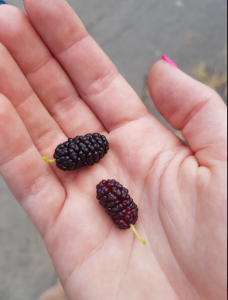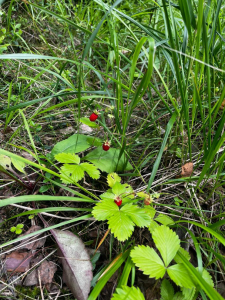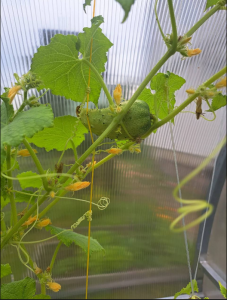
Fruits and vegetables
Vol 26, Issue 21, 28 March 2024
Vegetables and fruits of different colors – green, yellow, orange, red and purple – help us stay healthy and enrich our diet in terms of content, taste and consistency. Even those whose daily diet includes rice or bread, probably try to diversify it with various vegetables and fruits. A monotonous diet is harmful not only for our health, but also for the health of the planet, as it leads to the spread of monocultures and loss of biodiversity.

However, many people do not consume enough vegetables and fruits. According to the recommendations of the World Health Organization, in order to achieve positive results in terms of health and nutrition, it is necessary to consume at least 400 grams of these products per day. In 2017, about 3.9 million deaths worldwide were associated with insufficient consumption of vegetables and fruits (WHO, 2019). It is estimated that insufficient consumption of vegetables and fruits accounts for about 14 percent of deaths from gastrointestinal cancer, about 11 percent of deaths from coronary heart disease and about 9 percent of deaths due to stroke.
Vegetables and fruits are considered edible parts of plants cultivated or harvested in the wild (for example, seed-bearing structures, flowers, buds, leaves, stems, shoots and roots) in their raw form or minimally processed. Excluded from this definition are:
- starchy root vegetables and tubers such as cassava, potatoes, sweet potatoes and yams (although the leaves of these plants are consumed as vegetables);
- dry legumes (pod), except for those harvested unripe;
- cereals, including corn, except those harvested unripe;
- nuts, seeds and oilseeds such as coconuts, walnuts and sunflower seeds.
Unlike products of most other categories, fruits are usually consumed raw (without heat treatment): they are eaten whole (berries) or peeled (oranges, bananas, papaya and mongooses). Many vegetables are also eaten raw, for example in salads. Some of them (for example, vegetable beans) must be cooked before use.

Small farms around the world grow vegetables and fruits for their own consumption or for sale. In most developing countries, they are the ones who supply fruit and vegetable products to the mass consumer market. The production volume of each of these farms is low, which creates reliability and quality problems. Technology and innovation are needed to improve both the quality and volume of products at all stages of the fruit and vegetable supply chain. A variety of innovations can be used, from farm–scale technologies and methods to comprehensive digital innovations that help ensure the safety and quality of fresh produce as it moves along the chain. Innovative approaches such as public-private partnerships can stimulate the growth and development of this sector.
Income and employment. The price of a kilogram of vegetables and fruits is usually higher than the price of the same volume of other types of food products (with the exception of livestock products). But their production is often more labor-intensive than the production of other food products. Related to this problem are the opportunities to create jobs and provide income for actors operating at all stages of the value chains.

Gender issues and youth. A significant proportion of fresh produce is produced by women; they are also often responsible for harvesting, marketing and processing the resulting products. At the stage of consumption, they often decide which products to buy and how to cook them. But women are disadvantaged at all stages of the chain: as producers, they have limited access to land, means of production and advisory services, as entrepreneurs – to finance for the development of their business, as workers they face the problem of unfair wages, and as consumers they do not have sufficient knowledge about food and nutrition. Vegetables and fruits are highly profitable products; In addition, the sector has high potential in terms of innovation, which creates opportunities for attracting young people to production and other activities in value chains.
- New Year’s mood - 22nd November 2024
- Minimalism is a way of life. Where to begin? - 15th November 2024
- Why do you need an air humidifier? - 8th November 2024
